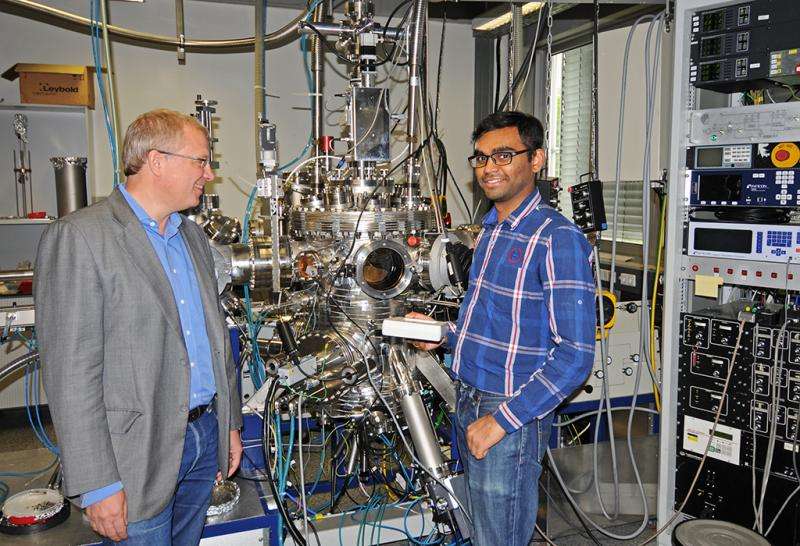Oxygen vacancy supported memory

A non-volatile memory keeping its digital information without power and working at the same time at the ultrahigh speed of today's dynamic random access memory (DRAM) – that is the dream of materials scientists of TU Darmstadt.
In a recent paper just published online in the high impact journal Advanced Functional Materials, the researchers investigated why hafnium oxide based devices are so promising for memory applications and how the material can be tuned to perform at the desired level. This knowledge could be the base for future mass application in all kind of electronic devices.
This novel kind of non-volatile memory saves information by changing the electrical resistance of a metal-insulator-metal structure. The high respectively low resistive states represent zero and one and do not vanish even when the computer is turned off. The main principle of this resistive random access memory (RRAM) has been known for several years, but researchers and developers are still fighting to bring it into real live applications.
Memory based on hafnium oxide is particularly interesting due to its superior properties. However, the devices still cannot be fabricated with low variability and low spread of electronic properties as required for large scale production. Furthermore, the switching behavior is complex and still has not been fully understood.
Oxygen vacancies
The researchers of TU Darmstadt are following a recipe which has been extremely successful in semiconductor device technology: They focus on the defects in the material. "Up to now, it was not entirely clear which physical and chemical material properties govern the resistive switching process," says Prof. Dr. Lambert Alff, head of the Advanced Thin Film Technology group in the Materials Science department of TU Darmstadt. His team focused their research on the role of oxygen defects in the functional material.
Using molecular beam epitaxy, a well-known technique from semiconductor technology, the group was able to produce RRAM structures where only the oxygen concentration was varied while all the rest of the device was identical. "By changing the oxygen defect concentration in hafnium oxide we could unambiguously correlate the state of material with the resistive switching behavior of the memory device," explains Sankaramangalam Ulhas Sharath, PhD student in the group and first author of the publication.
Based on these results the researchers developed a unified model connecting all so far reported switching states to the behavior of oxygen vacancies. Another exciting consequence of their work is the discovery that quantized conductance states can be stabilized at room temperature when controlling the oxygen vacancies paving the way for novel quantum technology.
Will RRAM be the replacement for Flash memory?
The improved understanding of the role of oxygen vacancies might be the key to produce RRAM cells with reproducible properties on a larger scale. Due to its inherent physical limitations it is expected that within the next few years the current prevailing flash technology will be replaced by another non-volatile memory technology. It could be RRAM that will be satisfying the ever growing hunger for more energy efficient and ubiquitous memory in cars, mobiles, fridges etc. It even might be particularly suited for neuromorphic circuits mimicking the functionality of the human brain – a visionary concept.
More information: Sankaramangalam Ulhas Sharath et al. Control of Switching Modes and Conductance Quantization in Oxygen Engineered HfO x based Memristive Devices, Advanced Functional Materials (2017). DOI: 10.1002/adfm.201700432
Journal information: Advanced Functional Materials
Provided by Technische Universitat Darmstadt


















